How to Relax Before a Blood Pressure Reading: 10 Powerful Techniques
As an internal medicine physician specializing in hypertension management, one of the most common questions I get asked is, “How can I relax before a blood pressure reading?” It’s a great question, especially since stress and anxiety can significantly impact your blood pressure results. Many people don’t realize just how much of an effect being nervous about a doctor’s appointment, or the mere act of having your blood pressure taken, can have. In this post, I’ll share with you some practical, effective ways to lower your stress levels and make sure your blood pressure reading is as accurate as possible.
Understanding the Link Between Stress and Blood Pressure

First, let’s dive into why it’s so important to relax before a blood pressure reading. When your body is under stress, it releases a flood of hormones, such as adrenaline and cortisol. These hormones can cause your heart rate to increase and your blood vessels to constrict, which in turn raises your blood pressure. If you’re feeling stressed out or anxious when the cuff is wrapped around your arm, you may end up with a falsely high blood pressure reading. This is especially common when you’re worried about whether you’ll have high blood pressure. It’s something I see frequently in my practice, and while the readings are important, they’re not always reflective of your baseline blood pressure if you’re nervous.
The Impact of White Coat Syndrome
Have you ever heard of “white coat syndrome”? It’s a phenomenon where patients experience elevated blood pressure readings simply because they’re in a medical setting or around medical professionals. You can imagine the anxiety that builds when you’re sitting in a doctor’s office, waiting for a result that could impact your health. It’s not uncommon for a patient’s blood pressure to be much higher in the doctor’s office than it is at home or in other more relaxed environments. This is one of the reasons why it’s essential to address how to relax before a blood pressure reading—it can help you get a more accurate reflection of your true blood pressure.
How to Relax Before a Blood Pressure Reading
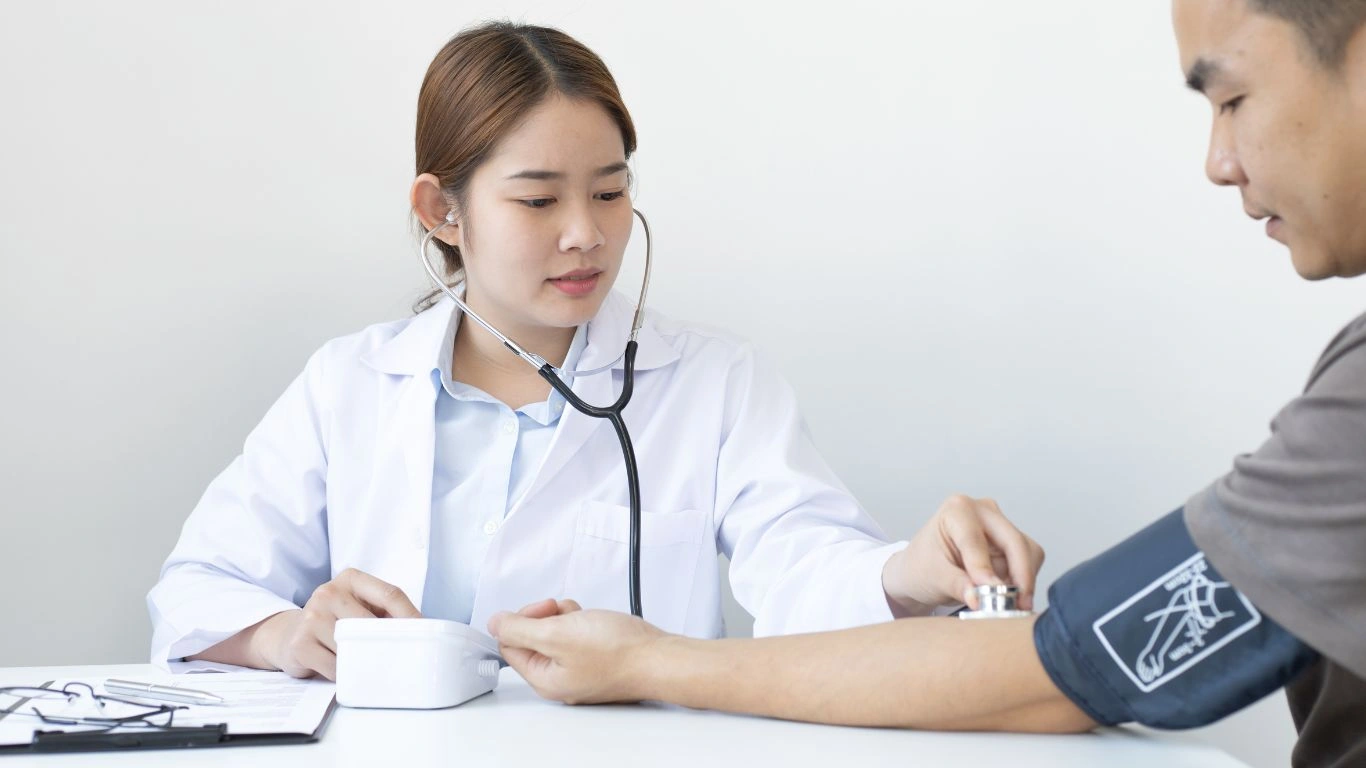
Now that we know why it’s important to relax, let’s talk about how to do it. Here are several strategies that I personally recommend to my patients and use myself when I’m checking my own blood pressure. The goal is to create a calm, comfortable environment where your body can relax, and your blood vessels can return to their normal state.
1. Arrive Early and Give Yourself Time to Settle In
One of the best ways to reduce stress is to simply give yourself time to adjust to the doctor’s office. When you arrive, don’t rush straight into the exam room. Take a few minutes to sit down in the waiting area. The key is to arrive early enough so that you’re not feeling rushed. Use this time to focus on your breathing and calm your mind before your appointment begins. I always recommend arriving 10-15 minutes early. You might feel awkward sitting alone in the waiting room at first, but trust me, it will make a difference when it’s time for your reading.
2. Practice Deep Breathing
Deep breathing is one of the easiest and most effective ways to calm your nervous system. Before your blood pressure is taken, try closing your eyes for a minute and practice deep breathing exercises. Here’s a simple technique you can use:
- Inhale slowly through your nose for a count of 4.
- Hold your breath for a count of 4.
- Exhale slowly through your mouth for a count of 4.
- Pause and repeat the cycle 3-5 times.
This process helps to reduce stress by increasing oxygen flow to your brain and calming your nervous system. I’ve seen patients calm down in just a few minutes by doing this, and it can make a noticeable difference in their readings.
3. Make Sure You’re Comfortable
It may sound simple, but getting comfortable during your blood pressure reading is crucial. The way you sit, the position of your arm, and even how tightly the cuff is inflated can all affect your blood pressure measurement. Here’s what I recommend:
- Sit with your back supported and your feet flat on the floor. Avoid crossing your legs, as this can artificially elevate your reading.
- Rest your arm on a flat surface with your palm facing up. Your arm should be at the level of your heart for the most accurate reading.
- Stay still and avoid talking while the blood pressure is being measured. Movement or talking can cause small fluctuations in your reading.
By ensuring you’re in the right position, your blood pressure reading will be more accurate, and it will help you feel more relaxed knowing you’ve got the basics covered.
4. Bring a Relaxing Distraction
If you tend to get anxious or bored in the waiting room, consider bringing a calming distraction with you. Some people like to listen to soothing music through headphones or practice mindfulness techniques on their phones. If you’re someone who enjoys reading, a light book or magazine can help take your mind off of the impending blood pressure check. The idea here is to find something that helps you feel calm and centered, rather than focusing on your anxiety or the fact that your blood pressure is about to be measured.
5. Practice Positive Visualization
Visualization is a technique that athletes often use before a big event, and it can work wonders for managing stress before a blood pressure reading. The next time you’re about to have your blood pressure taken, close your eyes and visualize yourself in a peaceful, relaxing setting. Picture yourself at the beach, in a quiet forest, or lying in a hammock on a sunny day. Imagine your body feeling relaxed and at ease. The more vivid the image, the more effective it can be at helping reduce your stress levels.
Why Relaxation Matters for Your Health
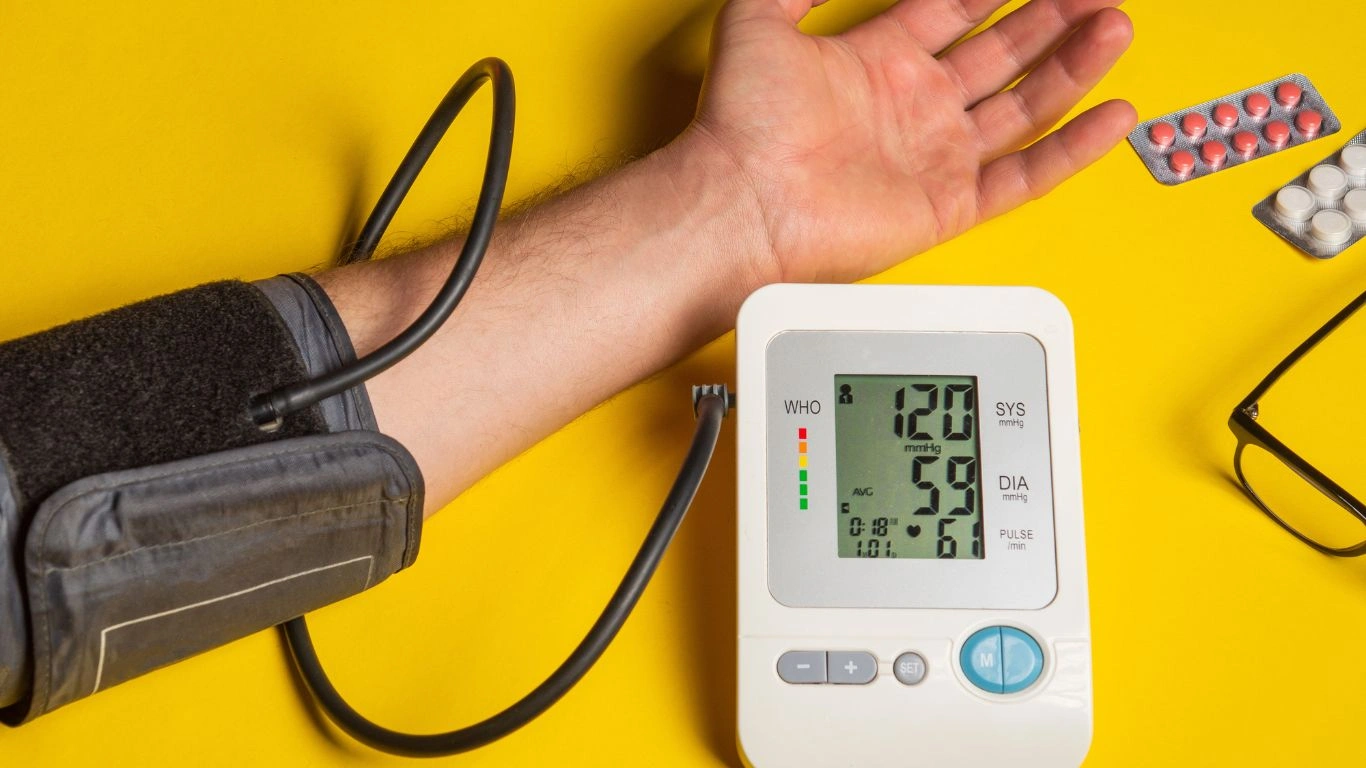
As someone who’s been working with patients with hypertension for years, I can tell you that how you feel in the moments before your blood pressure is measured matters. The goal isn’t just to get an accurate reading—it’s to ensure that you’re managing your stress in a healthy way. Stress management, as simple as it sounds, can help reduce the overall strain on your cardiovascular system. Over time, practicing relaxation techniques can also help lower your average blood pressure, reducing the risks associated with hypertension like stroke or heart disease.
Other Relaxation Techniques to Lower Blood Pressure Readings

We’ve covered some essential strategies for relaxing before a blood pressure reading, but there are many other techniques you can explore to help manage your stress levels. Everyone is different, so finding what works best for you is key. Some individuals may benefit from physical exercises, while others might prefer mental exercises or even lifestyle changes that promote overall relaxation. Let’s dive into a few more options that can help reduce anxiety before your next blood pressure check.
6. Progressive Muscle Relaxation (PMR)
Progressive Muscle Relaxation (PMR) is another technique I often recommend to patients. It’s a great way to lower tension in the body, which directly impacts blood pressure. The technique involves tensing and then relaxing different muscle groups in your body, starting from your toes and working up to your head. Here’s a simple breakdown of how to do it:
- Start by sitting comfortably in a chair and take a few deep breaths to begin relaxing.
- Focus on your feet. Tense the muscles in your toes and feet for about 5 seconds, then release the tension and relax for 15 seconds.
- Move up to your calves, then your thighs, abdomen, chest, arms, and neck. Tense each muscle group for 5 seconds and relax for 15 seconds.
- End by relaxing your face and jaw. This is a wonderful way to release any pent-up tension in your body.
Doing PMR for just 10 minutes before your blood pressure reading can significantly help in calming your nervous system and preparing your body for an accurate reading. It’s a technique that I personally find very effective, and many of my patients have mentioned it helps them feel more in control of their anxiety during doctor visits.
7. Meditation and Mindfulness Practices
If you haven’t yet tried meditation, it’s never too late to start. Meditation and mindfulness are powerful tools for lowering stress and calming the mind. In fact, research shows that regular meditation can help reduce blood pressure by lowering the heart rate and improving circulation. Even a few minutes of focused breathing or mindfulness before a blood pressure test can make a huge difference.
You don’t need to be a meditation expert to get the benefits. Here’s a simple meditation technique I recommend to my patients:
- Find a quiet space and sit comfortably. Close your eyes and focus on your breath.
- Inhale deeply through your nose for 4 seconds, hold the breath for 4 seconds, then exhale slowly for 4 seconds.
- As you breathe, focus on the sensation of the air entering and leaving your body. If your mind starts to wander, gently bring your attention back to your breath.
- Practice for at least 5-10 minutes before your blood pressure test.
The beauty of this technique is that it’s simple, free, and doesn’t require any special equipment. Plus, practicing mindfulness can help you feel more grounded and present, which is crucial for reducing any feelings of nervousness before a medical test.
Making Lifestyle Adjustments for Long-Term Blood Pressure Control
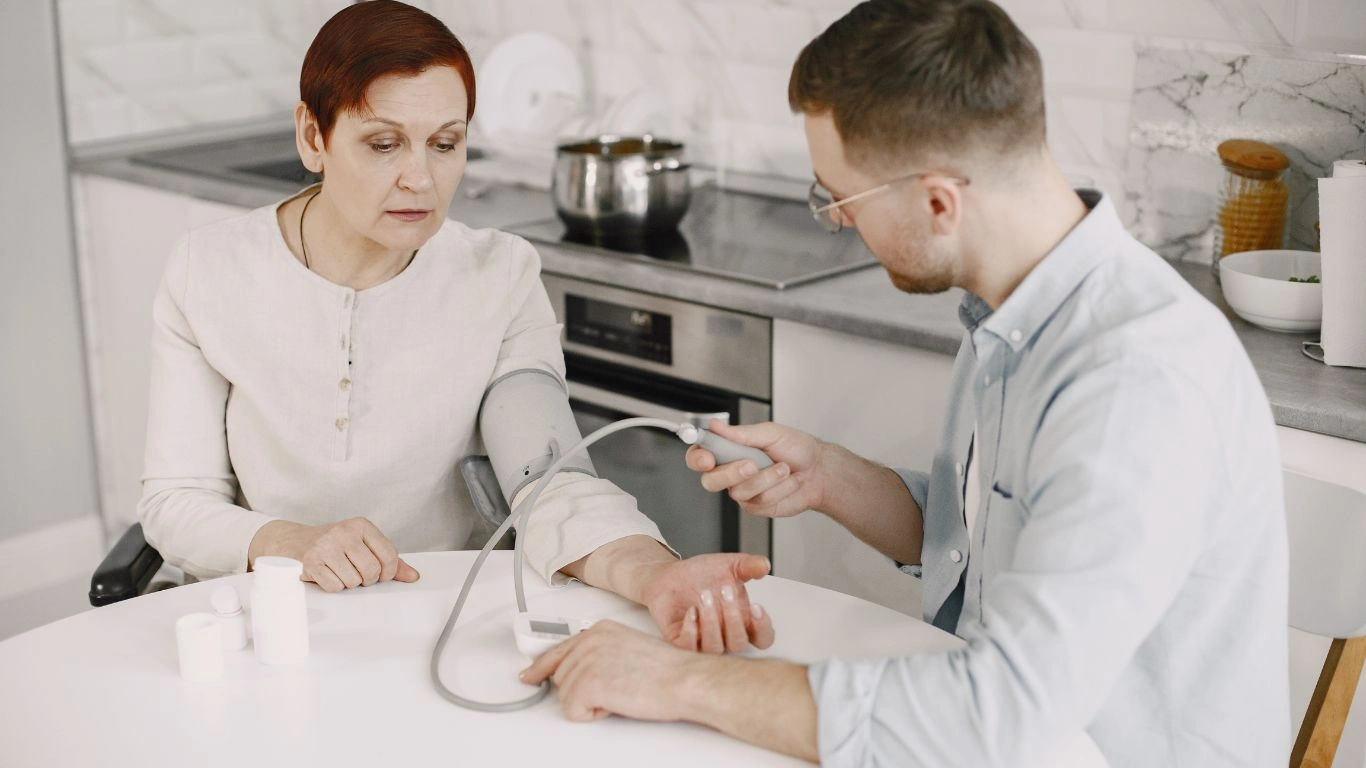
While relaxing before your blood pressure reading is essential, it’s also important to think about long-term strategies for managing blood pressure and stress in your day-to-day life. If you have high blood pressure, it’s crucial to adopt a holistic approach to your health that includes both physical and mental wellness. I’ve worked with many patients who have made significant improvements in their blood pressure by simply changing a few lifestyle habits.
8. Regular Physical Activity
Exercise is one of the most effective ways to lower blood pressure naturally. Physical activity helps strengthen the heart, improve circulation, and reduce stress, which is why I always recommend it to my patients who are trying to manage their blood pressure. Even a brisk walk for 30 minutes a day can make a big difference.
The great thing about exercise is that it doesn’t need to be intense or time-consuming. You can start small and gradually increase the intensity as your fitness level improves. Over time, consistent physical activity can lead to a noticeable drop in both systolic and diastolic blood pressure readings, and it will also help you manage stress more effectively.
9. Limit Caffeine and Alcohol Intake
While a cup of coffee or a glass of wine may seem like the perfect way to unwind, both caffeine and alcohol can contribute to higher blood pressure levels. Caffeine can temporarily raise your heart rate and cause a spike in your blood pressure, and excessive alcohol consumption can have long-term negative effects on your heart health. I always advise my patients to monitor their intake of both and try to limit consumption, especially in the hours leading up to their blood pressure check.
If you’re someone who enjoys a morning cup of coffee, consider switching to a decaffeinated version, or try replacing your afternoon coffee with a calming herbal tea. Small adjustments like these can go a long way in maintaining healthy blood pressure levels.
10. Manage Your Weight
Maintaining a healthy weight is another key factor in controlling blood pressure. Overweight and obesity are strongly linked to high blood pressure, and losing even a small amount of weight can help lower your blood pressure significantly. A balanced diet combined with regular physical activity is the best approach for achieving and maintaining a healthy weight.
As someone who focuses on managing hypertension, I encourage my patients to make small, sustainable changes to their diet. Instead of focusing on quick-fix diets, I recommend a lifestyle approach that includes plenty of fruits, vegetables, lean proteins, and whole grains. The goal is to nourish your body and support your long-term health, not just to shed a few pounds before an appointment.
Additional Strategies to Enhance Relaxation and Lower Stress
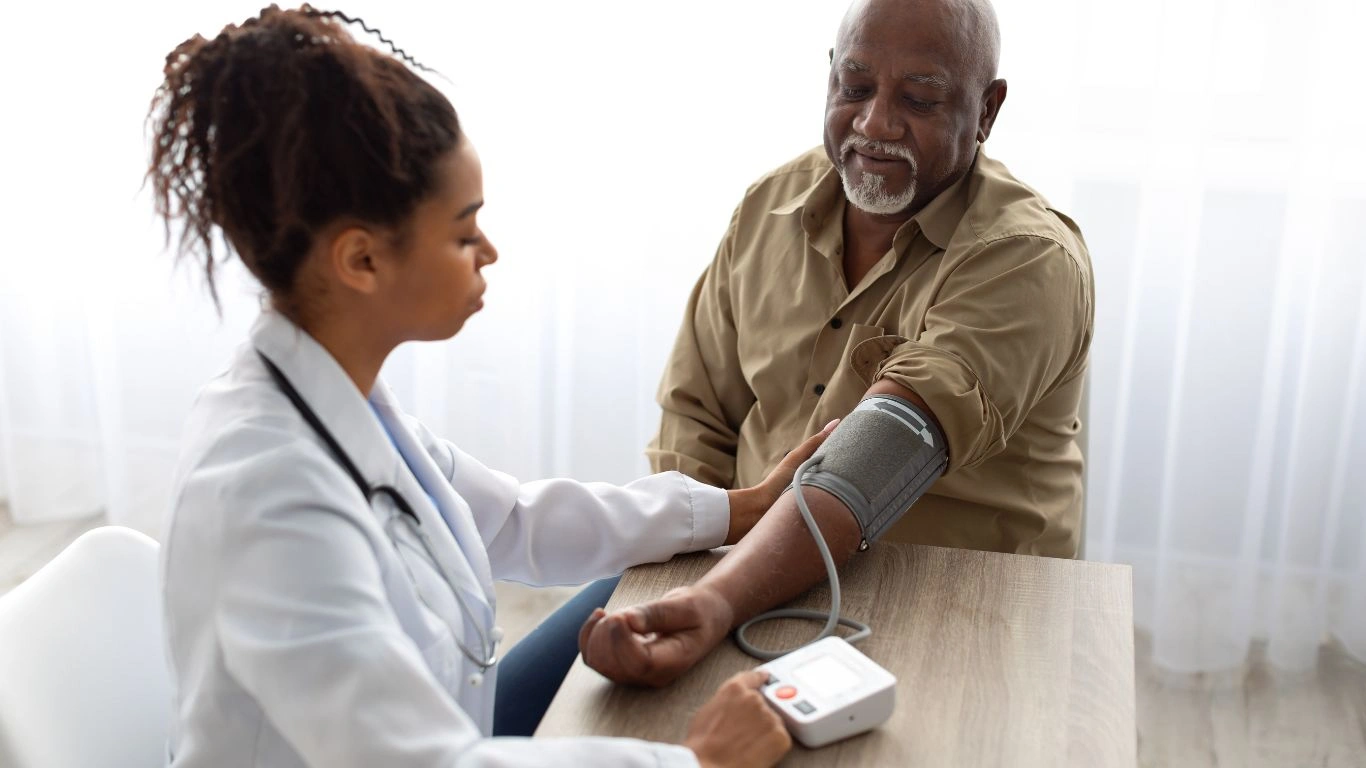
In addition to the techniques I’ve already mentioned, there are other small lifestyle tweaks that can contribute to reducing stress and promoting better blood pressure management. For example, taking a warm bath or using essential oils like lavender or chamomile before a blood pressure reading can also help you relax. These small rituals may not seem significant on their own, but when combined with the other techniques, they create a powerful stress-reducing effect.
Lastly, never underestimate the power of good sleep. Poor sleep quality or lack of sleep can elevate stress and negatively affect your blood pressure. Aiming for 7-9 hours of restful sleep each night will not only help your body relax, but it also improves your overall health and makes managing stress much easier. Try to create a consistent bedtime routine that helps you wind down at night—this can include reading a book, practicing relaxation techniques, or taking a warm shower before bed.
How to Maintain Relaxed Blood Pressure Readings Over Time
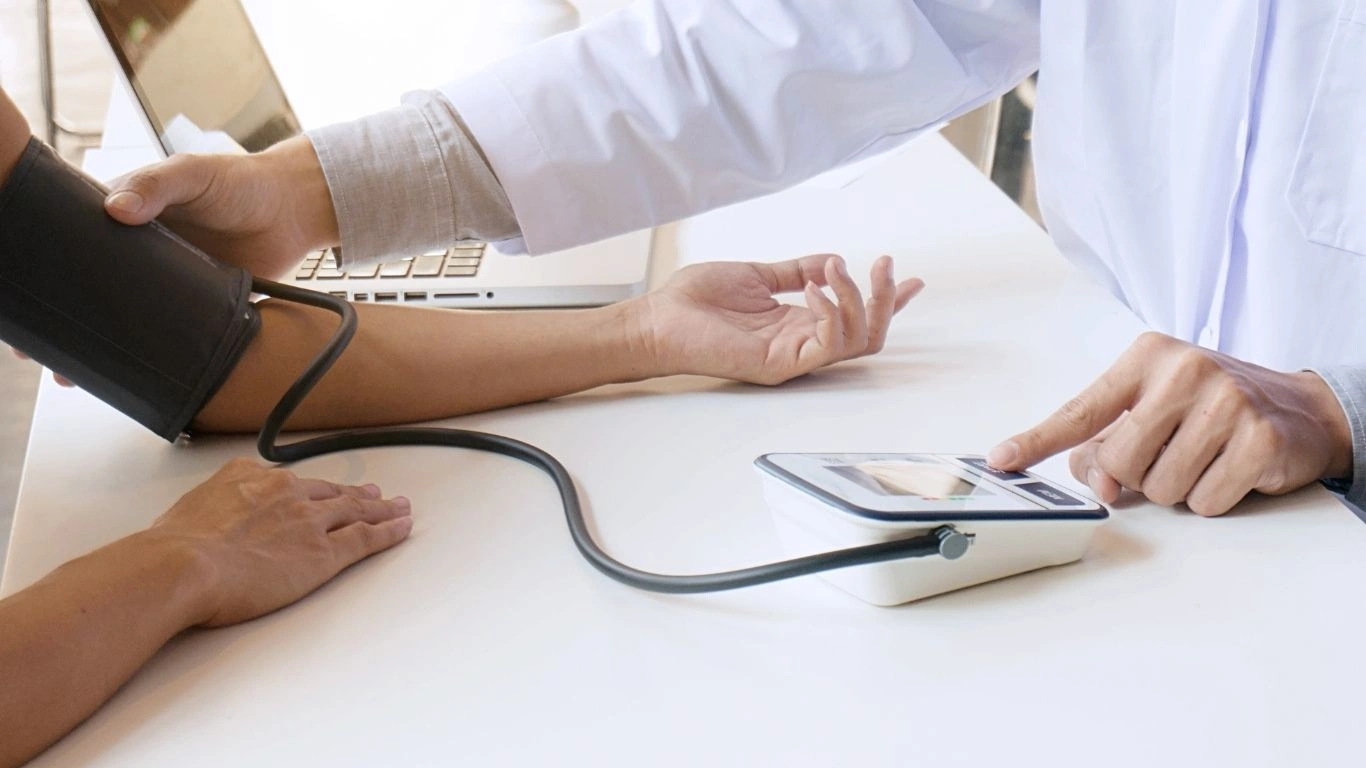
We’ve covered several techniques that can help you relax before a blood pressure reading, but what about long-term strategies to keep your blood pressure in a healthy range? As a physician with years of experience managing hypertension, I can tell you that it’s not just about getting that perfect reading on the day of your checkup. It’s about adopting habits that help keep your blood pressure under control on a daily basis. After all, managing stress and hypertension is a lifelong commitment, and the good news is that with the right approach, it can be done.
11. Creating a Consistent Daily Routine
One of the most effective ways to manage stress and lower blood pressure is to develop a daily routine that prioritizes relaxation and self-care. A consistent routine helps signal to your body that it’s time to slow down, making it easier to unwind before any blood pressure check. Think about what your ideal day looks like—do you start your morning with a few minutes of stretching? Do you have time during the day to step away from work and breathe deeply? Or, do you make time in the evening to unplug from technology and enjoy a relaxing hobby?
In my own life, I’ve found that small rituals can set the tone for the day. For instance, I make sure to have my morning coffee in silence, without rushing through it. Even as a busy physician, this quiet moment in the morning gives me the peace I need to start the day with less stress. For my patients, I recommend that they incorporate their own small calming routines, whether it’s reading a book, doing a quick meditation, or simply enjoying a peaceful breakfast without distractions.
12. Cognitive Behavioral Therapy (CBT) for Stress Management
If you find that relaxation techniques alone aren’t quite enough to manage your stress, you may want to consider cognitive behavioral therapy (CBT). CBT is a structured, time-limited therapy that helps you change negative patterns of thinking and behavior. It’s widely used for treating anxiety and stress, and it can have a lasting impact on your blood pressure by teaching you how to cope with stress in healthier ways.
I’ve worked with several patients who have found success with CBT, particularly in reducing the nervousness they experience before medical appointments. Through CBT, patients learn practical tools for challenging their anxious thoughts and replacing them with more realistic and calm perspectives. For example, rather than catastrophizing about a potential high blood pressure reading, you’ll learn how to view the situation with more balance and less anxiety.
13. Keeping Track of Your Blood Pressure at Home
Many people find that monitoring their blood pressure at home helps reduce anxiety. When you’re able to track your readings in a calm environment, you’re less likely to experience the “white coat syndrome” that can cause spikes in blood pressure during a doctor’s visit. I always encourage my patients to invest in a reliable blood pressure monitor and check their blood pressure regularly at home. This way, they can spot trends and take proactive steps before any issues escalate.
When using a home monitor, be sure to follow the instructions carefully. Sit in a quiet room for five minutes before taking a reading, and take two or three measurements a few minutes apart to ensure accuracy. By tracking your blood pressure at home, you’ll not only have a better understanding of your true numbers, but you’ll also feel more empowered and in control of your health.
What to Do if You Notice Your Blood Pressure is High

Even with all the techniques in place to relax before your blood pressure readings, there might be times when your numbers come back higher than expected. If this happens, it’s important to stay calm and take the appropriate steps. Here’s what I recommend if you find yourself in this situation:
14. Don’t Panic—Recheck After a Few Minutes
If you’re in a doctor’s office and your blood pressure is elevated, don’t panic. First, make sure that you’re sitting comfortably and your arm is properly positioned. Recheck the reading after a few minutes of relaxation, breathing exercises, or simply sitting still. Often, blood pressure can fluctuate, and a second reading may provide a more accurate result. If you’re checking your blood pressure at home, follow the same process—take a few minutes to relax before rechecking your readings.
15. Talk to Your Healthcare Provider
If you consistently see high blood pressure readings, it’s important to consult with your healthcare provider. High blood pressure (hypertension) often doesn’t have noticeable symptoms, but over time, it can lead to serious health problems, such as heart disease, stroke, and kidney damage. Your provider will be able to assess your overall health and may suggest lifestyle changes, medications, or additional testing to determine the best course of action.
As someone who’s worked closely with patients managing hypertension, I can’t stress enough how important it is to work together with your doctor to develop a personalized plan for managing your blood pressure. It’s not just about getting your numbers down temporarily—it’s about finding sustainable solutions that work for your unique lifestyle and health needs.
References and Resources
If you’re looking for additional information about hypertension, stress management, or blood pressure monitoring, here are a few trusted resources to check out:
- Health.com – For general health tips and insights on managing hypertension.
- National Institutes of Health (NIH) – A leading resource for research and guidelines on blood pressure management.
- American Heart Association – An excellent resource for heart health and blood pressure control strategies.
These websites offer expert-backed information that can guide you in your journey to lower your blood pressure and live a healthier, more relaxed life.
Disclaimer
While the information provided in this article is based on my experience as an internal medicine physician specializing in hypertension management, it is intended for informational purposes only. It is important to consult with your healthcare provider before making any significant changes to your diet, exercise routine, or medication regimen. Each individual’s health needs are unique, and your doctor will help you develop a personalized plan based on your specific circumstances.

Dr. Gwenna Aazee is a board-certified Internal Medicine Physician with a special focus on hypertension management, chronic disease prevention, and patient education. With years of experience in both clinical practice and medical writing, she’s passionate about turning evidence-based medicine into accessible, actionable advice. Through her work at Healthusias.com, Dr. Aazee empowers readers to take charge of their health with confidence and clarity. Off the clock, she enjoys deep dives into nutrition research, long walks with her rescue pup, and simplifying medical jargon one article at a time.






